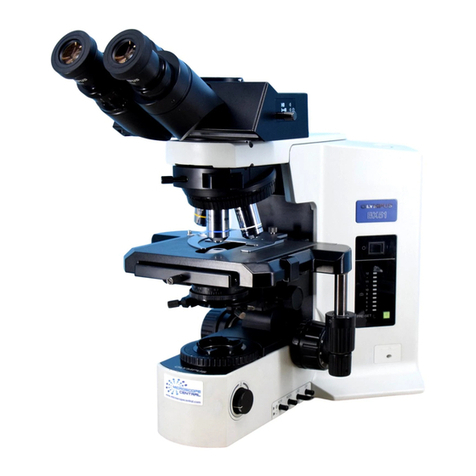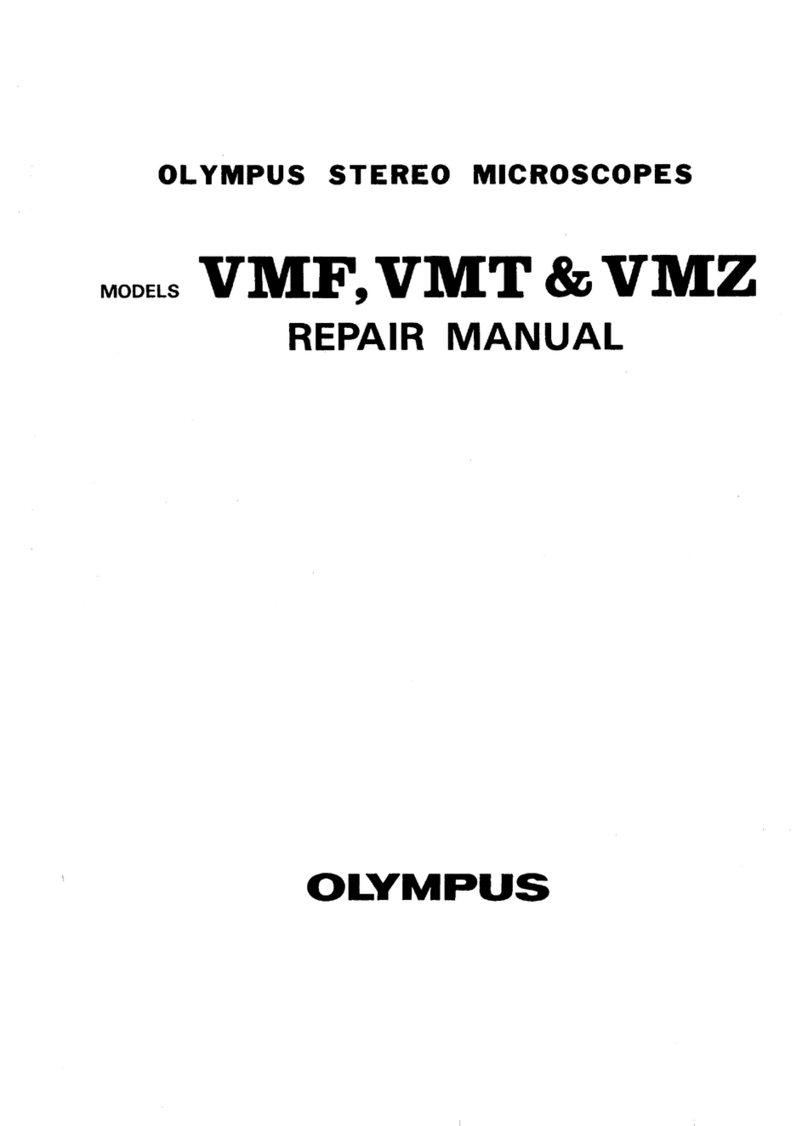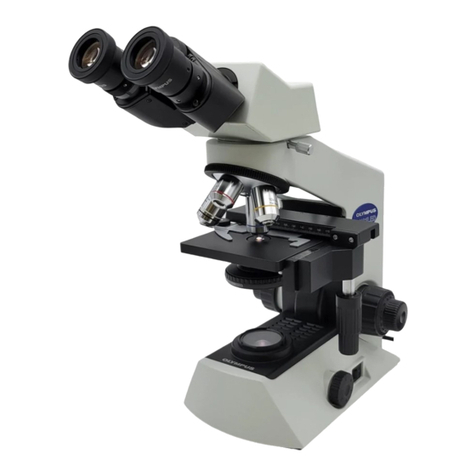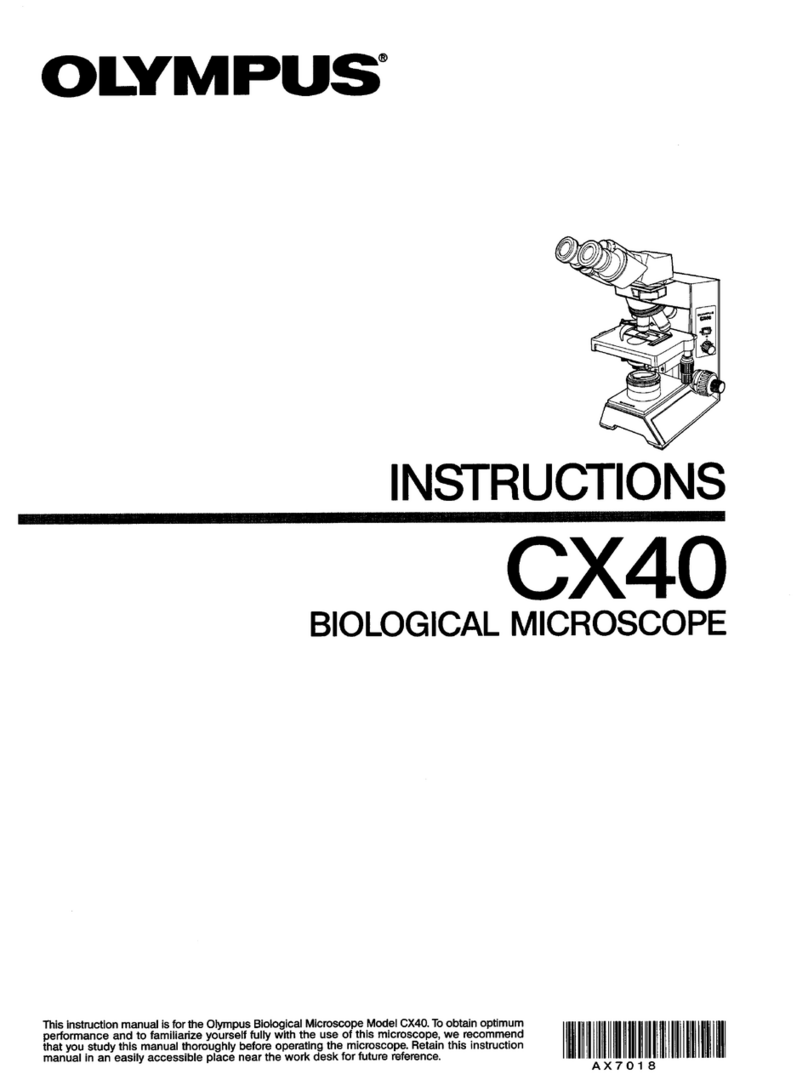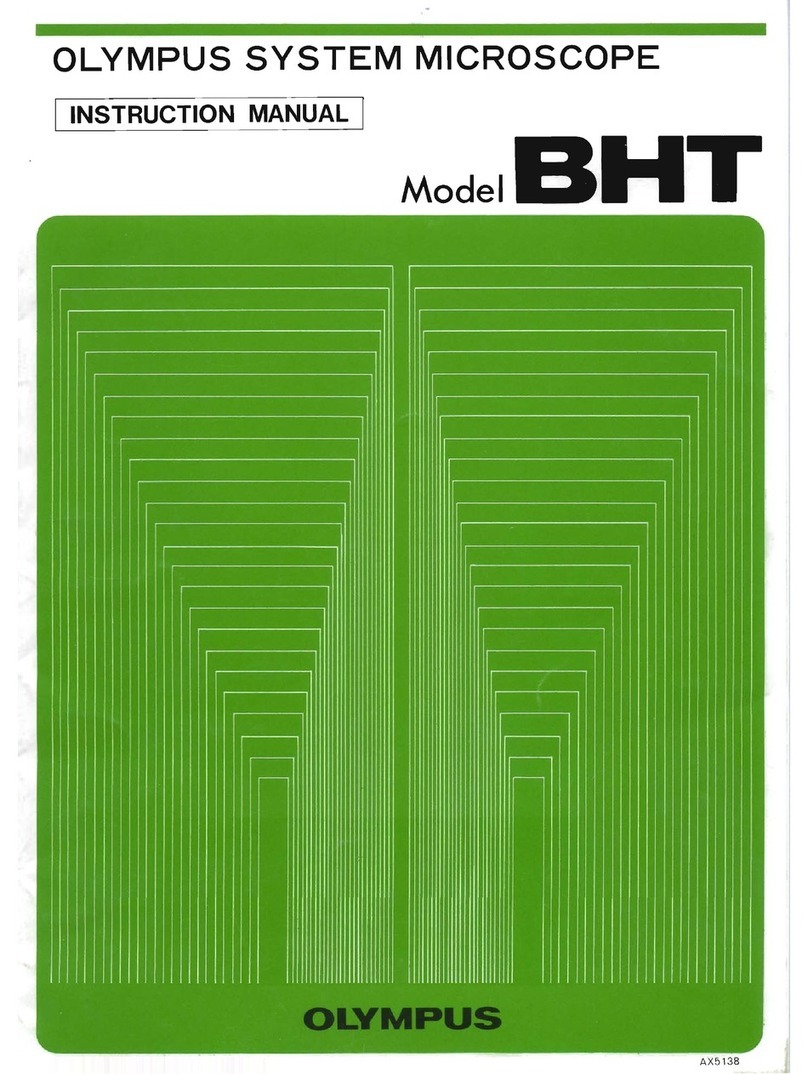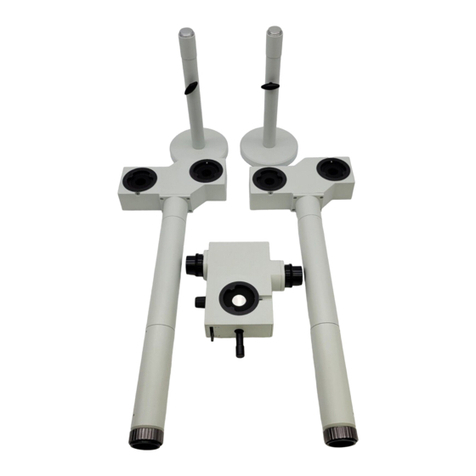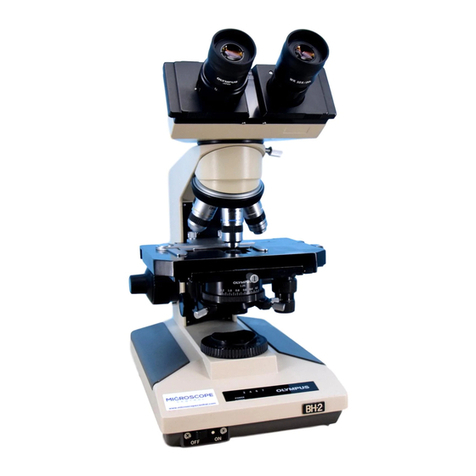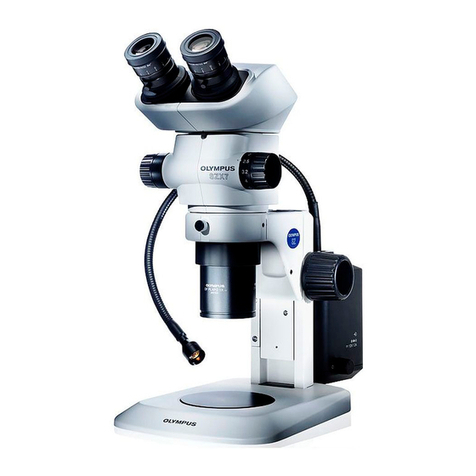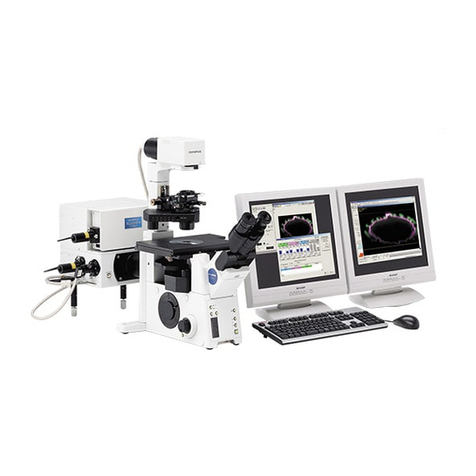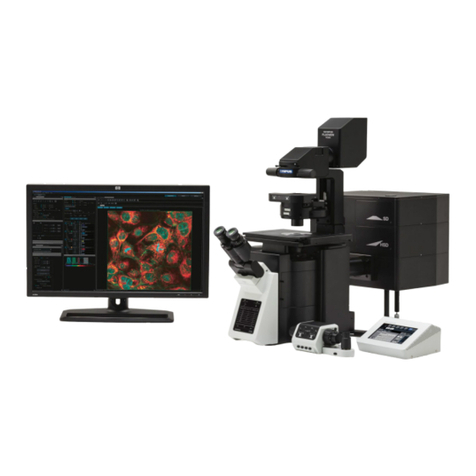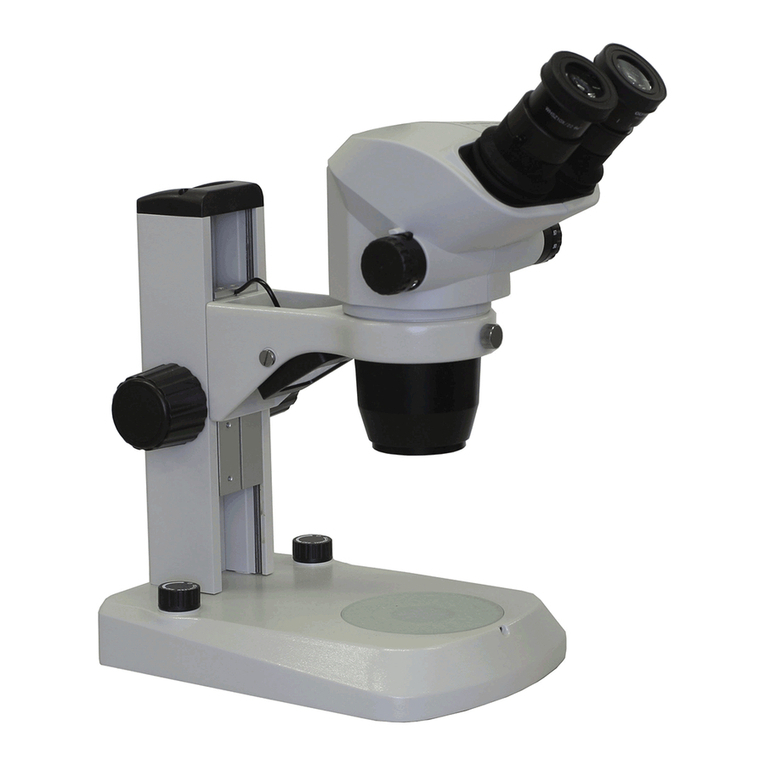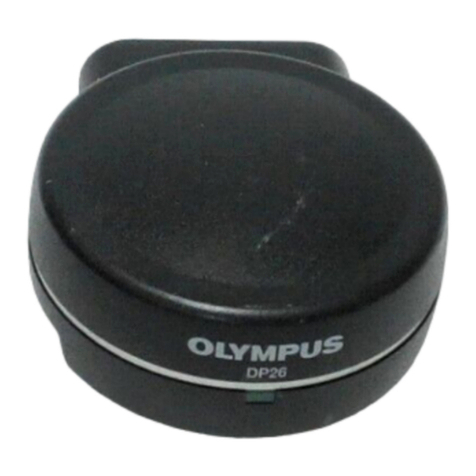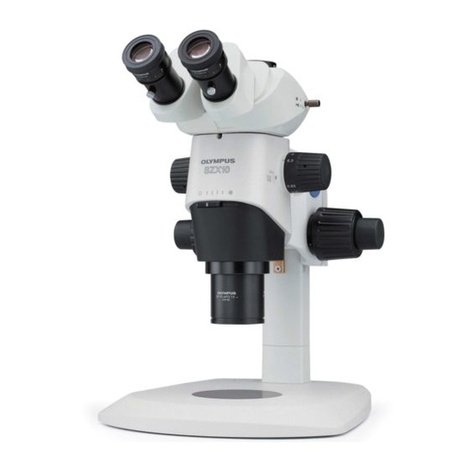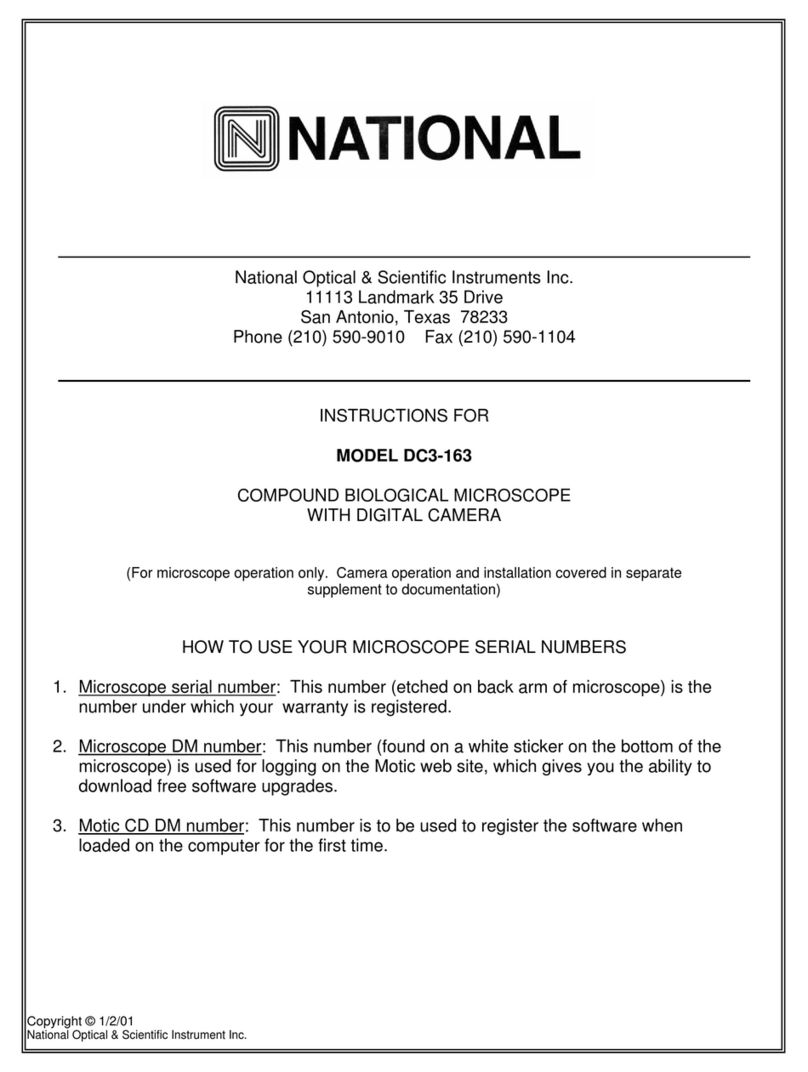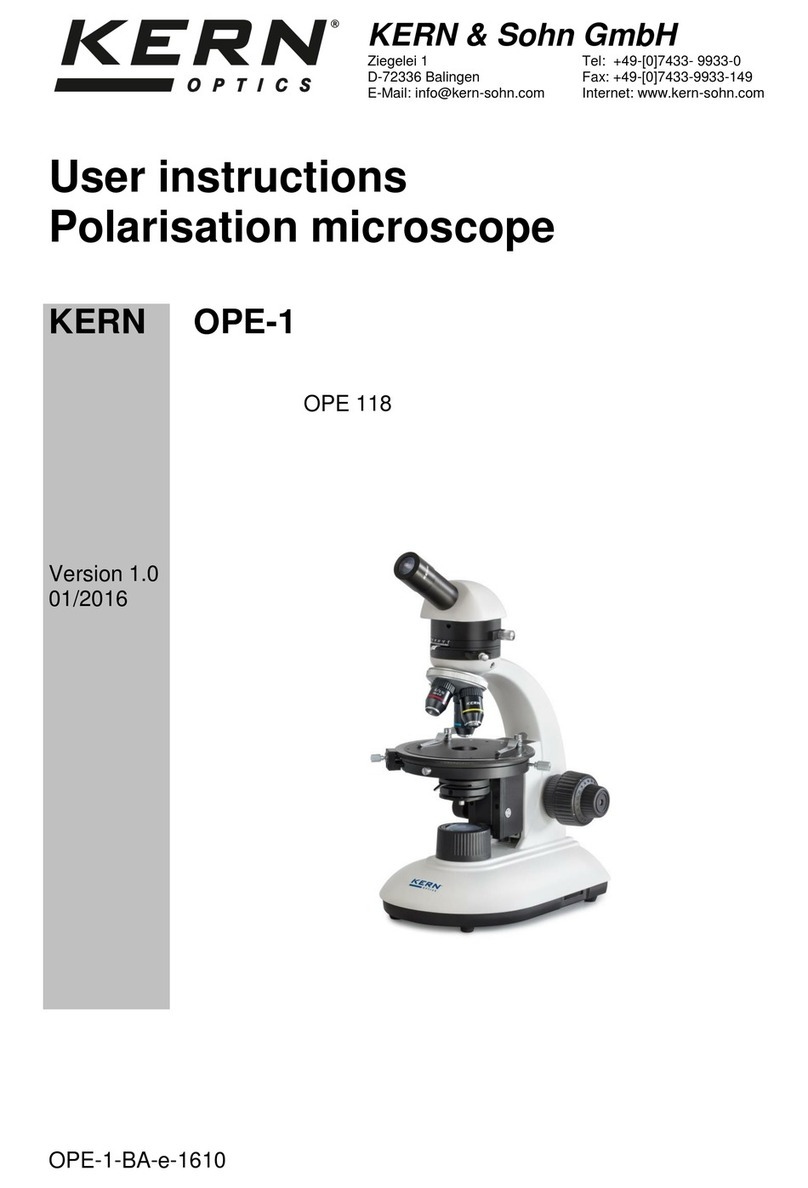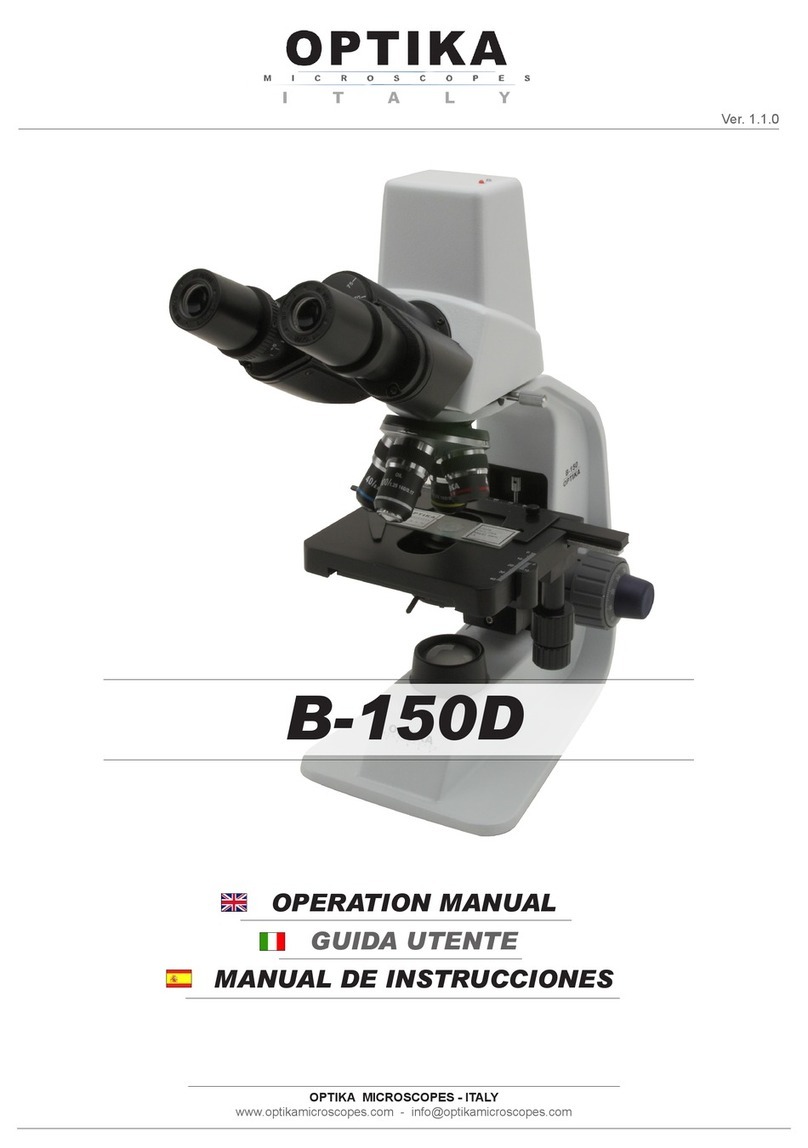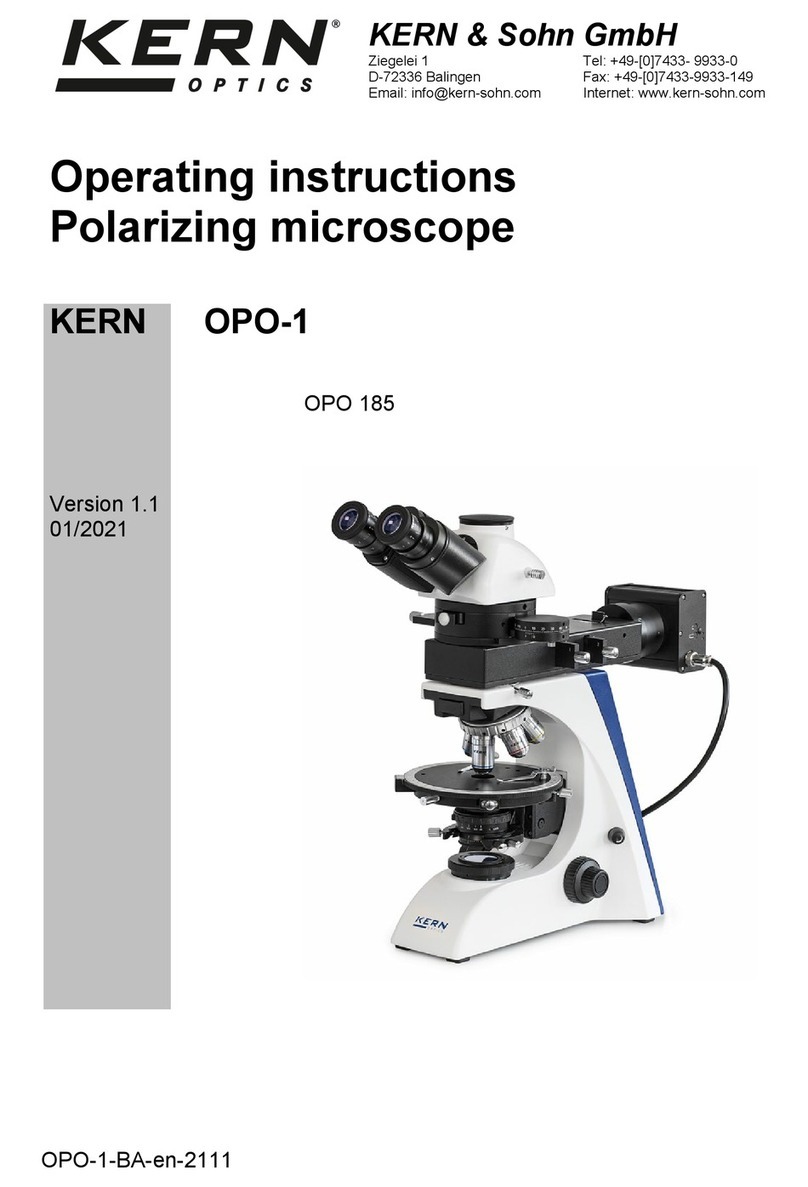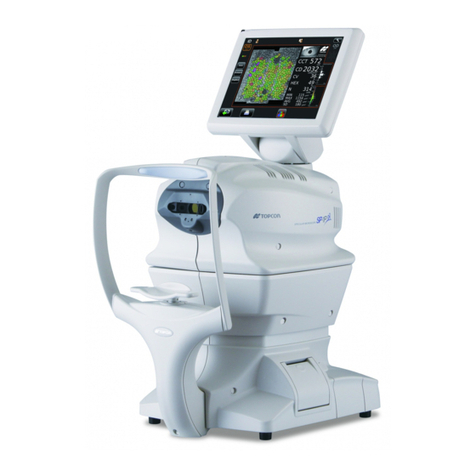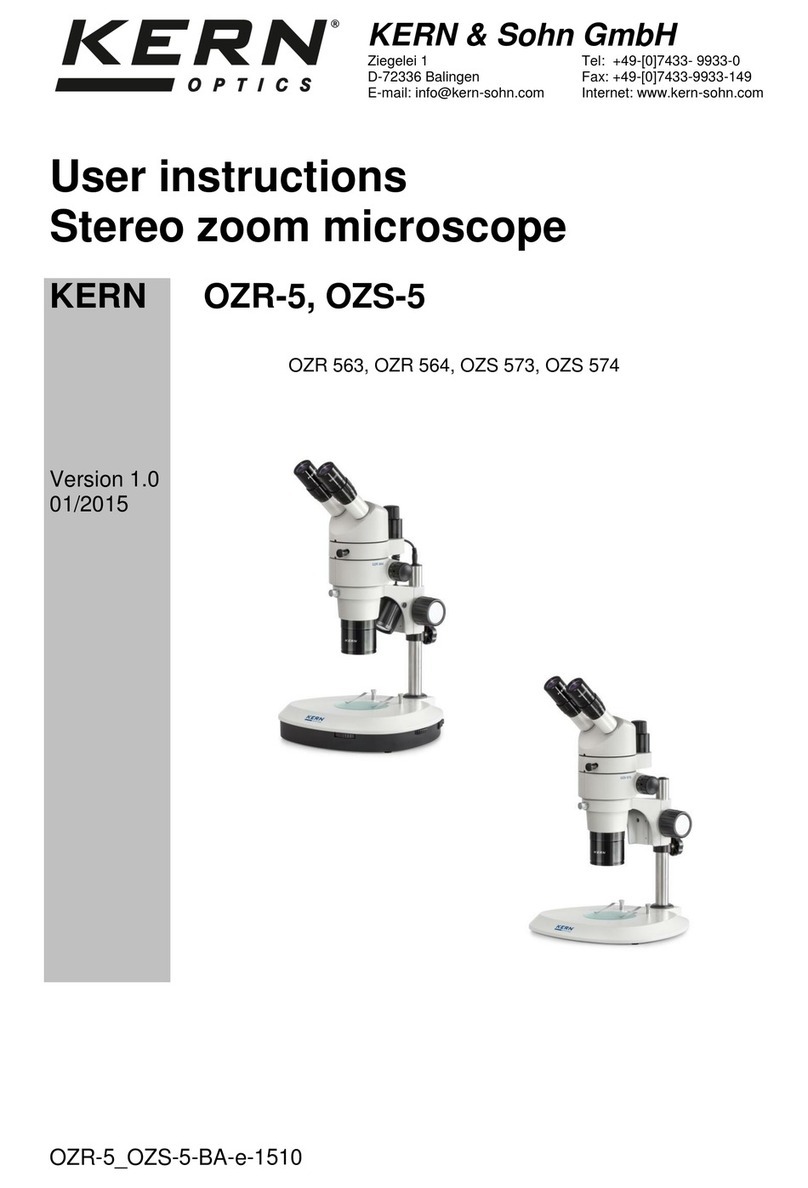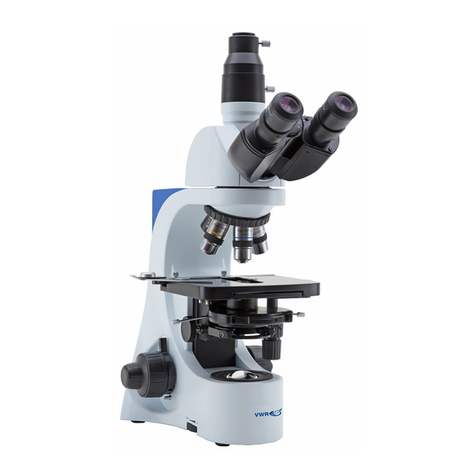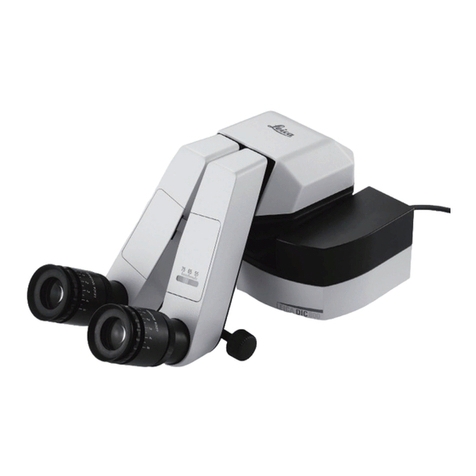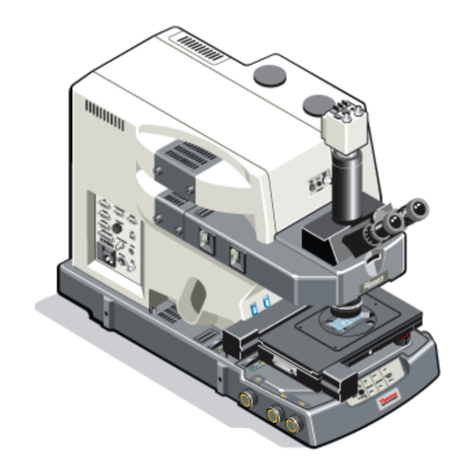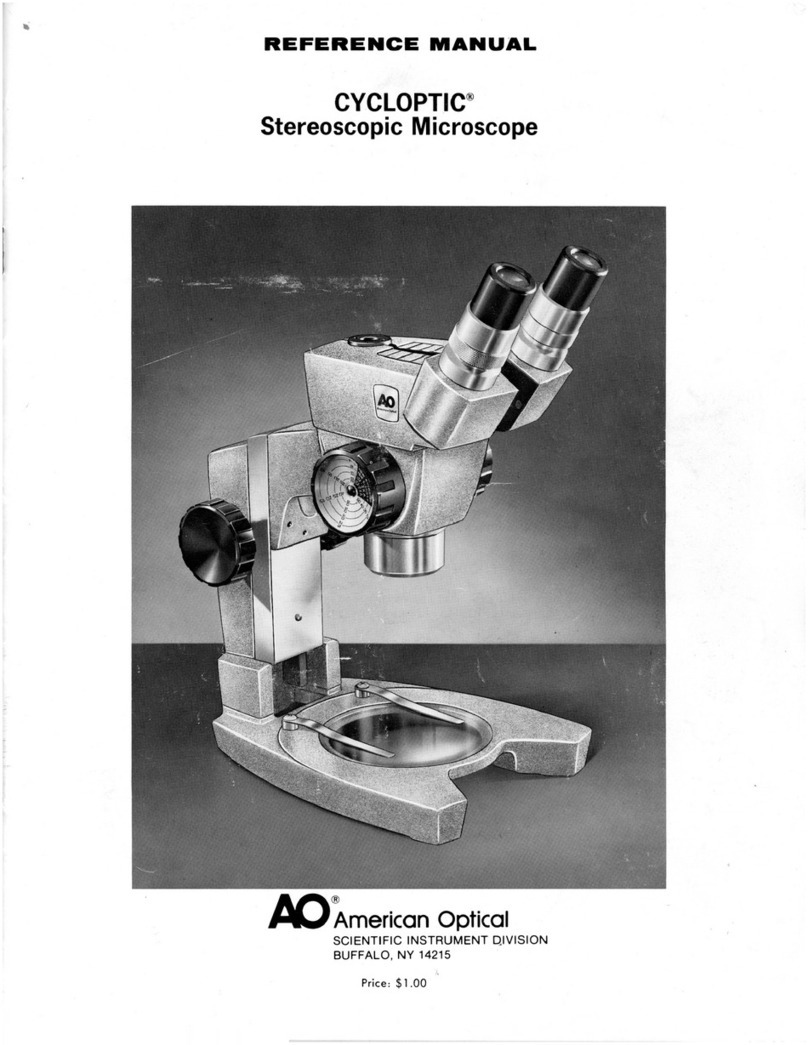
1
BX51WI
Fig. 1
IMPORTANT
This microscope employs a UIS2 (UIS) (Universal Infinity System) optical design, and should be used only
with UIS2 (UIS) eyepieces, objectives and condensers for the BX2 series. (Some of the modules designed
for the BX series are also usable. For details, please consult Olympus or the latest catalogues.)
To obtain comprehensive understanding on the operating procedures, please also read the separately
provided instruction manuals.
SAFETY PRECAUTIONS
1. After the equipment has been used in an observation of a specimen
that is accompanied with a potential of infection, clean the parts
coming in contact with the specimen to prevent infection.
· Moving this product is accompanied with the risk of dropping the
specimen. Be sure to remove the specimen before moving this
product.
· In case the specimen is damaged by erroneous operation, promptly
take the infection prevention measures.
2. Culture liquid or water spilt on the stage, condenser or microscope may
damage the equipment. Immediately wipe the liquid or water off if it is
spilt on them.
3. When moving the microscope, disconnect the reflected light illuminator,
observation tube and transmitted light lamp housing and carefully carry
the microscope by the base (front edge) @ and the grasping part on the
rear of the arm ² as shown in Fig. 1. (Weight: approx. 15 kg.)
Also be careful against slipping of hands during carrying.
# Damage to the microscope will occur if you grasp it by other parts
including the stage, coarse/fine adjustment knob, etc.
Safety Symbols
The following symbols are found on the microscope. Study the meaning of the symbols and always use the equipment
in the safest possible manner.
Symbol Explanation
Indicates that the surface becomes hot, and should not be touched with bare hands.
Before use, carefully read the instruction manual. Improper use could result in personal injury to
the user and/or damage to the equipment.
@
²
Instruction manual
BX51WI
TH4
BX-URA2/BX-RFA
WI-DPMC
WI-XYM/XYS
WI-SSNP
Contents
Explanation of transmitted brightfield observation, differential
interference contrast observation and infrared observation
Explanation of the external halogen bulb power supply unit
Explanation of reflected light fluorescence observation
Explanation of the variable-magnification dual-port observation tube
Explanation of the XY mover/bridge stage
Explanation of the swinging-sliding revolving nosepiece
1Getting Ready
1. A microscope is a precision instrument. Handle it with care and avoid subjecting it to sudden or severe impact.
2. The U-SWTR-3 super-widefield observation tube (FN 26.5) cannot be used with the BX51WI microscope.
3. The BX51WI microscope can be used with an intermediate attachment (such as a BX-URA2 or BX-RFA reflected light
illuminator, U-ECA or U-CA magnification changer, etc.).
Two intermediate attachments can be used only in the following conditions:
· The U-CA or U-ECA magnification changer or U-FWO filter wheel can be mounted as the second attachment.
· When a TV adapter with 1X or higher power is used, 2/3-inch CCD TV observation is possible.
· The peripheral areas of the field of view may be obscured or cut off in binocular observation using the U-TR30-2, U-ETR
or U-TR30IR (FN 22) super-widefield observation tube.
